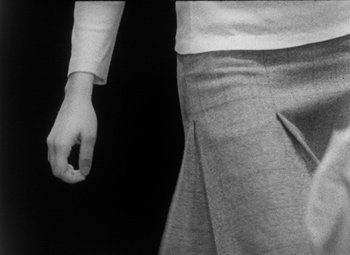Trances
dal 10/10/2008 al 14/12/2008
Segnalato da
Musee departemental d'art contemporain de Rochechouart
10/10/2008
Trances
Musee departemental d'art contemporain, Rochechouart
Four dance-related works from the permanent collections

Rineke Dijkstra, Douglas Gordon, Joachim Koester, Mathias Poledna.
"Why have moving images of bodies taken the place of statues ? Because the world has been set in motion, firstly as a planet, then as a poetic universe," wrote Jean Louis Schefer in the introduction to his On the World and Moving Images. Rochechouart Museum of Contemporary Art's new exhibition "Trances" explores this theme of the moving body and world through four key works from its collection, evoking aspects of dance, performance as well as experimental, ethnographic or science films.
Rineke Dijkstra's The Buzzclub, Liverpool, UK/Mysteryworld, Zaadam (1996-1997), records the behaviour of adolescents at a night club as they dance in front of a white backdrop, isolated from the crowd. They are filmed directly facing the camera but rapidly forget its presence as the techno beat takes over. Douglas Gordon, in Hysterical (1995), appropriates an old science film, projecting it in slow motion and partly reversed to obtain a mirror effect on two tilted screens, this double screen projection creating a three-dimensional space that spectators can move through and walk around. The film itself is an early 20th century documentary on hysteria, the study of which provided foundations for the beginnings of modern psychoanalysis. Mathias Poledna's short film Version shows a group of dancers silently floating in darkness. Their lack of any identifiable location heightens the sense of mystery and increases the dancers' photogenic impact. Poledna also pl ayfully evokes the feeling of an historical setting without ever pinpointing a specific moment in time. Like a haunted doppelgänger of this film, Joachim Koester's Tarantism shows actors imitating the trance-like states witnessed in primitive dance rituals, faking convulsions not unlike those seen in Douglas Gordon's Hysterical. The title Tarantism refers to the folk dance from Southern Italy thought to have its origins in the spasms caused by the tarantula spider's bite. In a predominently Catholic country, the dance survives, some claim, as a remnant of ancient Dionysian practices.
Monografik Editions will be publishing a catalogue to accompany the exhibition, with essays by Céline Eindenbenz, Jean-Yves Leloup, Philippe-Alain Michaud and Olivier Michelon.
Image: Mathias Poledna, Version, 2004.16mm black and white film, 10:40 min (16mm frame enlargement). Courtesy Galerie Daniel Buchholz, Cologne; Richard Telles Fine Art, Los Angeles; Galerie Meyer Kainer, Vienna.
Located at 40 km from Limoges, and 30 km from Limoges's airport, the Rochechouart Castle is perched dramatically on a rocky outcrop. Most of the castle date dates from the 15th century with an inner courtyard and elegant Renaissance gallery with frescoes from the 16th century. In 1985, Haute-Vienne Council established the Museum of contemporary art within its walls. The museum has an exceptional collection of artworks by artists such as Gerhard Richter, Luciano Fabro, Ugo Rondinone, Steve McQueen, Thierry Kuntzel… It includes also the Raoul Hausmann funds, dedicated to the famous dadaist who spent the last 20 years of his life in Limoges.
The Musée départemental d'art contemporain de Rochechouart is an initiative of the Conseil général de la Haute-Vienne. This exhibition was made possible through the support of the Minister of Culture (DRAC Limousin)
Musée départemental d'art contemporain de Rochechouart
Place du Château 87600 Rochechouart France
10am-12.30am/14pm-17pm
every day except Tuesday



